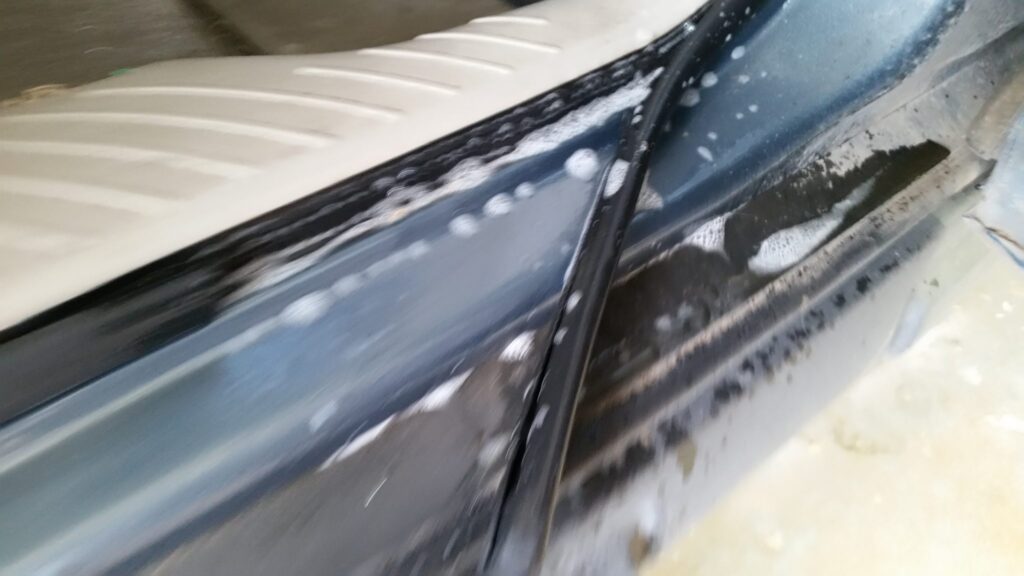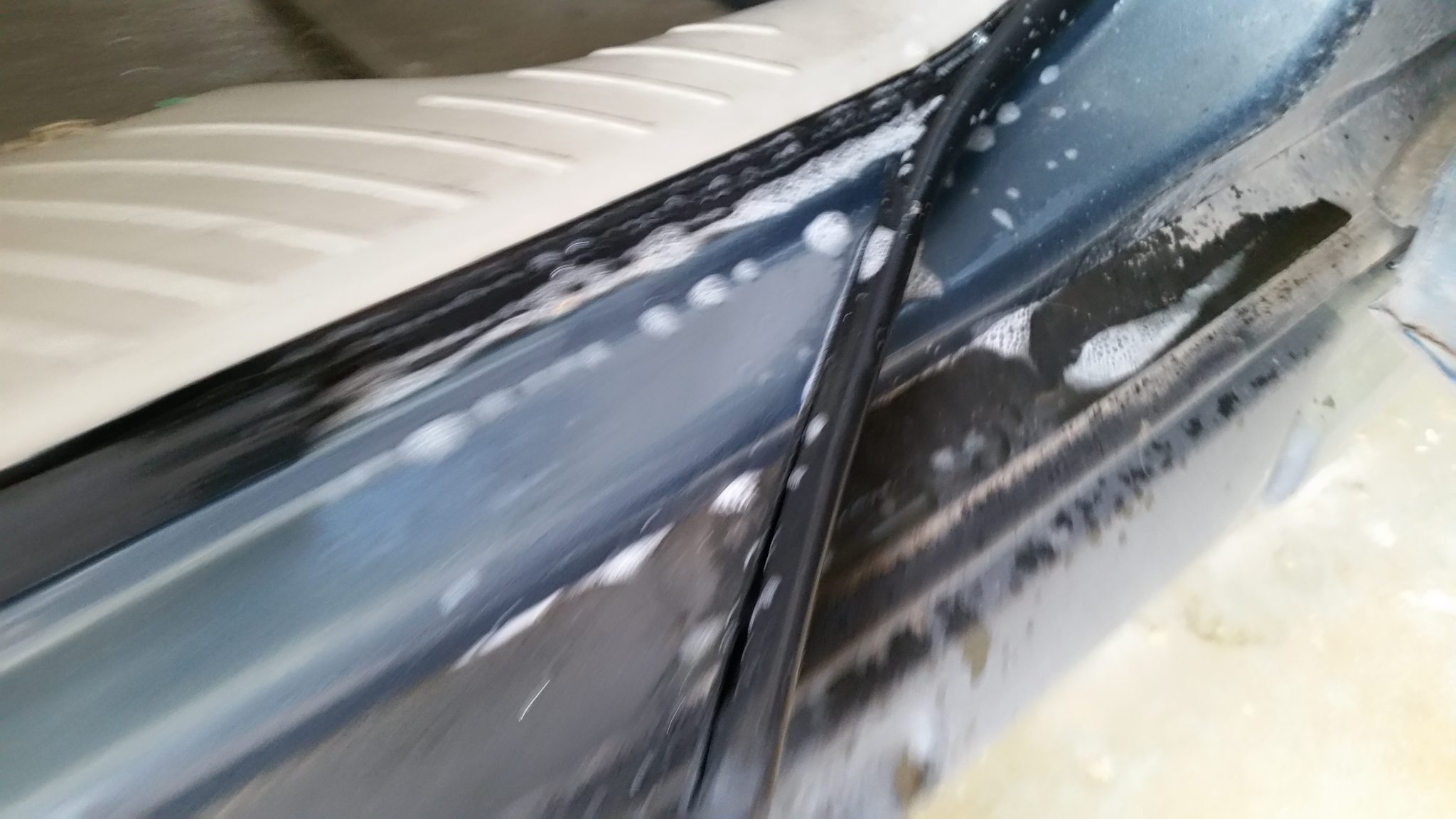
Introduction: Why Weather Stripping Matters
Weather stripping, also known as weather seals, plays a vital role in maintaining the integrity and comfort of your vehicle. These rubber or foam seals are strategically placed around the doors, windows, trunk, and hood to create a barrier against the elements. Over time, weather stripping can deteriorate due to exposure to sunlight, extreme temperatures, moisture, and physical wear and tear. Damaged weather stripping can lead to a host of problems, including:
- Drafts and Leaks: Compromised seals allow cold air, rain, snow, and dust to enter your car’s interior, making it uncomfortable and potentially damaging to sensitive electronics and upholstery.
- Increased Road Noise: Worn weather stripping reduces the car’s ability to dampen external noise, resulting in a louder and less pleasant driving experience.
- Reduced Fuel Efficiency: Drafts force your car’s heating and cooling systems to work harder to maintain a consistent temperature, leading to increased fuel consumption.
- Potential for Rust and Corrosion: Moisture intrusion can accelerate rust formation, especially in areas prone to water accumulation.
Fortunately, fixing or replacing weather stripping is a relatively straightforward and cost-effective DIY project. This comprehensive guide will walk you through the process step-by-step, providing you with the knowledge and skills to restore your car’s weather seals and enjoy a more comfortable and protected driving experience.
Identifying Damaged Weather Stripping
Before you begin the repair process, it’s essential to accurately identify the areas where the weather stripping is damaged. Here are some common signs of deterioration:
- Visible Cracks or Tears: Inspect the weather stripping for any visible cracks, tears, or missing pieces. Pay close attention to areas that are frequently exposed to sunlight or friction.
- Hardening or Brittleness: Over time, weather stripping can lose its flexibility and become hard or brittle. This can lead to gaps and ineffective sealing.
- Loose or Detached Sections: Check for sections of weather stripping that are loose, peeling away from the door frame, or completely detached.
- Water Stains or Mold Growth: Look for water stains, mold, or mildew around the door frame or interior panels, which can indicate a leak caused by damaged weather stripping.
- Audible Wind Noise: Listen for excessive wind noise while driving, especially at higher speeds. This can be a sign of gaps in the weather seals.
Once you’ve identified the damaged areas, take pictures of the problem spots. This will be helpful when you purchase replacement weather stripping and refer back to the original configuration.
Tools and Materials You’ll Need
Before you start the repair, gather the necessary tools and materials. Here’s a comprehensive list:
- New Weather Stripping: Purchase replacement weather stripping that is specifically designed for your car’s make and model. You can find this at auto parts stores or online retailers. Make sure to buy enough to cover all the damaged areas.
- Utility Knife or Scissors: A sharp utility knife or scissors will be needed to cut the weather stripping to the correct length.
- Adhesive Remover: Use an adhesive remover to clean away any old adhesive residue from the door frame and the weather stripping.
- Clean Rags or Microfiber Cloths: You’ll need clean rags or microfiber cloths to apply the adhesive remover and clean the surfaces.
- Rubbing Alcohol: Rubbing alcohol can be used to further clean and degrease the surfaces before applying new adhesive.
- Automotive Adhesive: Choose a high-quality automotive adhesive that is designed for bonding rubber or foam to metal.
- Caulk Gun (Optional): If you’re using a tube of automotive adhesive, you may need a caulk gun for easier application.
- Heat Gun or Hair Dryer (Optional): A heat gun or hair dryer can be used to soften the old weather stripping and make it easier to remove.
- Plastic Scraper or Putty Knife (Optional): A plastic scraper or putty knife can be used to gently pry off stubborn weather stripping.
- Measuring Tape or Ruler: A measuring tape or ruler will be needed to measure and cut the new weather stripping to the correct length.
- Gloves: Wear gloves to protect your hands from chemicals and sharp objects.
- Safety Glasses: Wear safety glasses to protect your eyes from debris and chemicals.
Step-by-Step Guide to Fixing Weather Stripping
Follow these steps to repair or replace your car’s weather stripping:
Step 1: Remove the Old Weather Stripping
Carefully remove the old weather stripping from the door frame. If it’s stuck on tightly, use a heat gun or hair dryer to soften the adhesive. Gently pry off the weather stripping using a plastic scraper or putty knife. Avoid using metal tools, as they can scratch the paint.
Step 2: Clean the Surface
Once the old weather stripping is removed, clean the surface thoroughly with adhesive remover. Use a clean rag or microfiber cloth to wipe away any residue. Then, clean the surface again with rubbing alcohol to degrease it. This will ensure that the new adhesive bonds properly.
Step 3: Measure and Cut the New Weather Stripping
Measure the length of the area where the weather stripping will be installed. Cut the new weather stripping to the correct length using a utility knife or scissors. It’s better to cut it slightly longer than necessary, as you can always trim it down later.
Step 4: Apply Automotive Adhesive
Apply a thin, even layer of automotive adhesive to the back of the new weather stripping. If you’re using a tube of adhesive, use a caulk gun for easier application. Be careful not to apply too much adhesive, as it can squeeze out and make a mess.
Step 5: Install the New Weather Stripping
Carefully position the new weather stripping onto the door frame, aligning it with the original position. Press firmly along the entire length of the weather stripping to ensure a good bond. Hold it in place for a few minutes to allow the adhesive to set.
Step 6: Trim Excess Weather Stripping
If there’s any excess weather stripping, trim it off with a utility knife or scissors. Make sure to cut it cleanly and evenly for a professional look.
Step 7: Allow the Adhesive to Cure
Allow the adhesive to cure completely before closing the door. Refer to the adhesive manufacturer’s instructions for the recommended curing time. This will ensure that the weather stripping is securely bonded to the door frame.
Tips for a Successful Weather Stripping Repair
Here are some additional tips to help you achieve a successful weather stripping repair:
- Choose the Right Weather Stripping: Make sure to select weather stripping that is specifically designed for your car’s make and model. This will ensure a proper fit and seal.
- Clean the Surface Thoroughly: Proper surface preparation is crucial for a strong bond. Clean the surface thoroughly with adhesive remover and rubbing alcohol to remove any residue and grease.
- Use High-Quality Adhesive: Choose a high-quality automotive adhesive that is designed for bonding rubber or foam to metal. This will ensure a long-lasting and durable repair.
- Apply Adhesive Evenly: Apply a thin, even layer of adhesive to the back of the weather stripping. Avoid applying too much adhesive, as it can squeeze out and make a mess.
- Press Firmly: Press firmly along the entire length of the weather stripping to ensure a good bond. Hold it in place for a few minutes to allow the adhesive to set.
- Allow the Adhesive to Cure: Allow the adhesive to cure completely before closing the door. This will ensure that the weather stripping is securely bonded to the door frame.
- Work in a Well-Ventilated Area: When working with adhesive removers and automotive adhesives, work in a well-ventilated area to avoid inhaling harmful fumes.
- Wear Gloves and Safety Glasses: Wear gloves and safety glasses to protect your hands and eyes from chemicals and sharp objects.
Troubleshooting Common Problems
Here are some common problems you may encounter during weather stripping repair and how to troubleshoot them:
- Weather Stripping Won’t Stick: If the weather stripping won’t stick, it could be due to insufficient surface preparation or using the wrong type of adhesive. Make sure to clean the surface thoroughly and use a high-quality automotive adhesive.
- Adhesive Squeezes Out: If adhesive squeezes out when you install the weather stripping, you’ve likely applied too much. Wipe away the excess adhesive with a clean rag.
- Weather Stripping is Too Long or Short: If the weather stripping is too long, trim it to the correct length with a utility knife or scissors. If it’s too short, you’ll need to purchase a longer piece.
- Weather Stripping Comes Loose: If the weather stripping comes loose after installation, it could be due to insufficient adhesive or improper surface preparation. Reapply adhesive and make sure to clean the surface thoroughly.
Maintaining Your Weather Stripping
To prolong the life of your car’s weather stripping, follow these maintenance tips:
- Regular Cleaning: Clean your weather stripping regularly with a mild soap and water solution. This will remove dirt, grime, and debris that can cause deterioration.
- Apply a Rubber Protectant: Apply a rubber protectant to your weather stripping every few months. This will help to keep it supple and prevent it from drying out and cracking.
- Avoid Harsh Chemicals: Avoid using harsh chemicals or solvents on your weather stripping, as they can damage the material.
- Park in the Shade: Park your car in the shade whenever possible to protect the weather stripping from direct sunlight.
- Inspect Regularly: Inspect your weather stripping regularly for any signs of damage. Address any issues promptly to prevent them from worsening.
When to Consider Professional Help
While fixing weather stripping is a relatively straightforward DIY project, there are some situations where you may want to consider seeking professional help:
- Extensive Damage: If the weather stripping is extensively damaged or deteriorated, it may be best to have it replaced by a professional.
- Complex Installations: Some weather stripping installations can be complex, especially on newer vehicles. If you’re not comfortable with the process, it’s best to leave it to a professional.
- Lack of Experience: If you have no experience working on cars, it’s best to seek professional help to avoid damaging your vehicle.
Conclusion: Enjoy a Quieter and More Comfortable Ride
By following this comprehensive guide, you can successfully fix or replace the weather stripping on your car door and enjoy a quieter, more comfortable, and more fuel-efficient ride. Regular maintenance and prompt repairs will help to extend the life of your weather stripping and protect your car’s interior from the elements. So, take the time to inspect your weather stripping regularly and address any issues promptly. Your car and your comfort will thank you for it!

